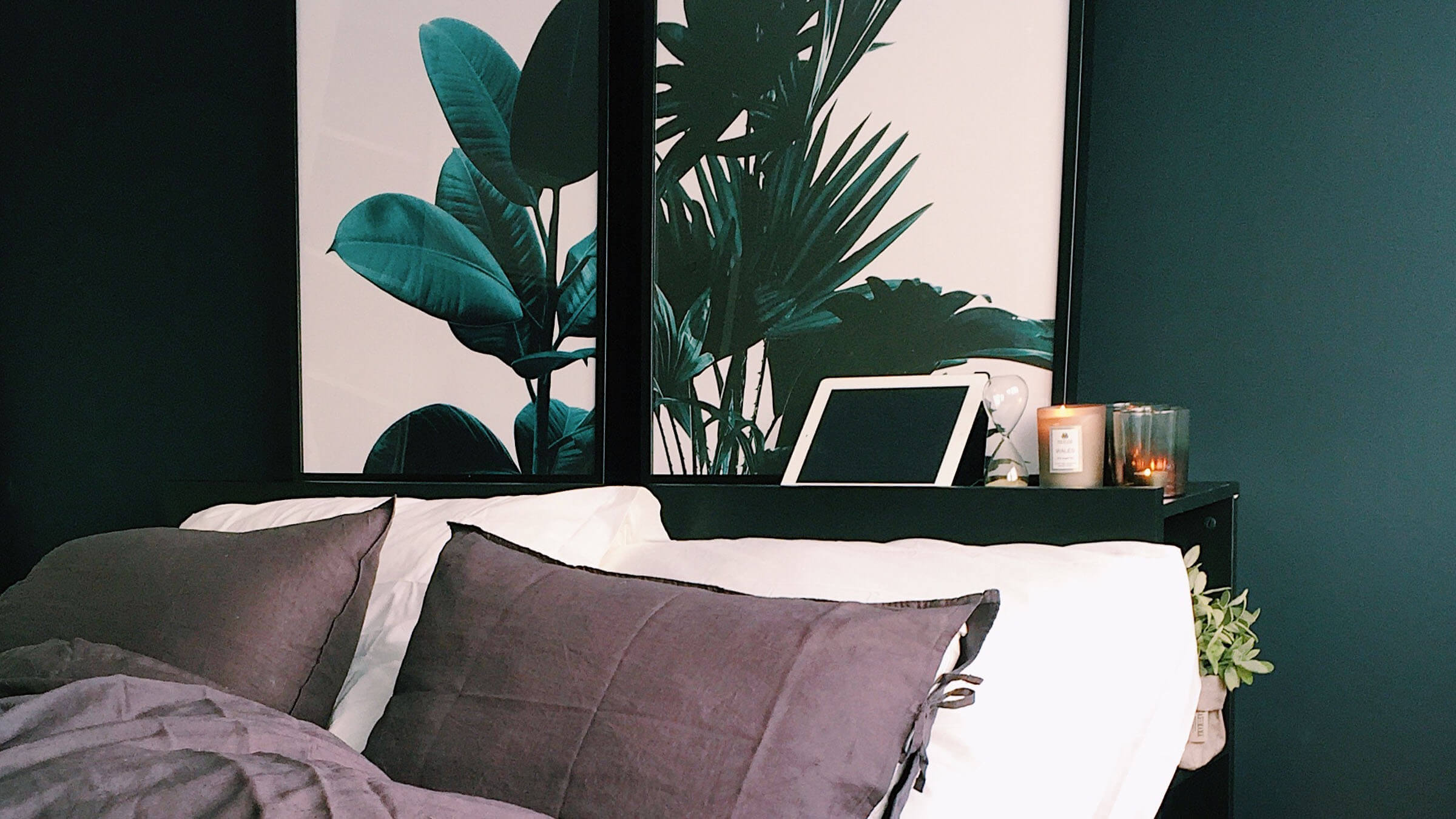Home interiors took a decidedly bold turn last year, with deep, rich hues ranging from jewel tones to earthy reds and greens, even pure black and brooding greys, turning up on magazine pages and Pinterest boards everywhere. And the trend shows no signs of slowing down: Rich Gold, Apricot Brandy, Mallard Blue and Caviar Black are among the Pantone Colour Institute’s suggested colours for homes and interiors in 2019. Here’s everything you need to know about introducing these power colours into your abode.
Keep an Open Mind
When it comes to such bold and dark hues, you just might be surprised by which colour (or colours) end up winning you over. Start by picking up a dozen (or more) paint swatches from your local hardware or home improvement store, cut up the strips so each colour is its own rectangle or square, and tape them on the walls and in the area you’re looking to paint. Observe how the colours look in different light and at different times of day, and remove the ones that don’t endure in their appeal until you’re down to just two or three contenders. Now it’s time to make the final call!
Choose One Colour To Reign
Once you commit to a bold or dark colour choice for a certain room, that colour becomes the focal point of the space, the thing that everyone will notice when they walk in – but that’s the point! You don’t want your fabulous new decor statement to be in competition with other strong colours; while you can use complementary colours as accents (we’ll get to that in a moment), there should be only one star of the show, so to speak.
Less Is More
With colour hues this dark and deep, there’s no reason to paint the whole room and oversaturate the space with colour – unless, of course, you’re going for that vampire cave look. In most cases, one accent wall makes a stronger statement. In any bedroom, a smart choice for an accent wall is the one behind the headboard, while in a living room area, the wall behind the couch or the entertainment unit both work. The exception to this rule is the dining room, which can benefit from the dramatic effect of bold colour on all four walls.
Get Creative With Your Colour Placement
There’s no rule, however, that says a new favourite colour has to be contained to a single accent wall. There are plenty of creative ways to integrate a dark or bold new hue while still leaving a space feeling balanced, particularly when it comes to living areas that aren’t your traditional four-walled room. Bold or dark hues can help to define and give character to a space, such as an entryway, the walls of a stairway, a dining nook or a mudroom.
Consider the Room’s Size And Natural Light
Introducing a dark hue is going to dramatically change the look and feel of any space, including potentially making a room feel less spacious or darker, if there isn’t a lot of natural light. While this might not matter in, say, a bathroom, it will in a bedroom or kitchen; for these rooms, you may want to steer towards the lighter end of the spectrum of rich hues, in the range of butter creme and cappuccino, perhaps finishing with a metallic paint top coat for a little extra shimmer.
Brighten the Room With Neutrals
There are several design tricks the pros use to counterbalance the gravitas of a bold or dark colour choice on the walls, one of which is to bring a certain lightness back to the space with light- and neutral-coloured accents, whether upholstered furniture pieces, pillow shams and comforter sets, or even spacious area rugs. These sorts of accents can help make your statement colour really pop – in the best way possible.
Add Modern Metallic Accents
Likewise, adding metallic touches to a room or living area that’s been painted with a dark or bold hue gives the space a little sparkle and levity. These finishing touches could be anything from a hanging lamp or tabletop light fixture, to a sparkle woven into the fabric of throw pillows on your bed or couch, to a grouping of picture frames, small framed mirrors or art pieces, perhaps even hung on the painted wall itself.
Natural Materials Soften A Room
Another pro tip for furnishing a space that’s anchored by a strong statement colour is to soften the colour with furnishings and/or accessories made from natural materials, such as leather furniture, comfy cashmere or wool throw blankets, linen pillow shams and bedding, rattan or woven rugs, and anything made from wood – whether rustic, reclaimed or perfectly polished.
Introduce Complimentary Accent Colours
Embracing the dark and bold paint trend doesn’t necessarily mean that the room can’t have any other colourful touches. If you want to introduce more colour, the key is figuring out which colours are complementary to your new hue. One safe bet is to skew towards pastels or softer colour shades – e.g. mint green with navy blue, or soft pink with dark grey. Bolder accent colours can work as well, but again, less is more, lest your secondary colour (or colours) start to vie for too much attention.
Bottom Line: Give These Colours the the Respect They Deserve
If you’re ready to embrace the trend of dark and bold paint colours in the home, it’s essential to have a game plan in place long before you crack open that paint can, both in terms of where you’ll be painting as well as what that means in terms of the rest of the room’s decor. These dramatic hues are not for the faint of heart, but when they’re done right, they can give a space a beautiful and dramatic wow factor.














Sorry, the comment form is closed at this time.